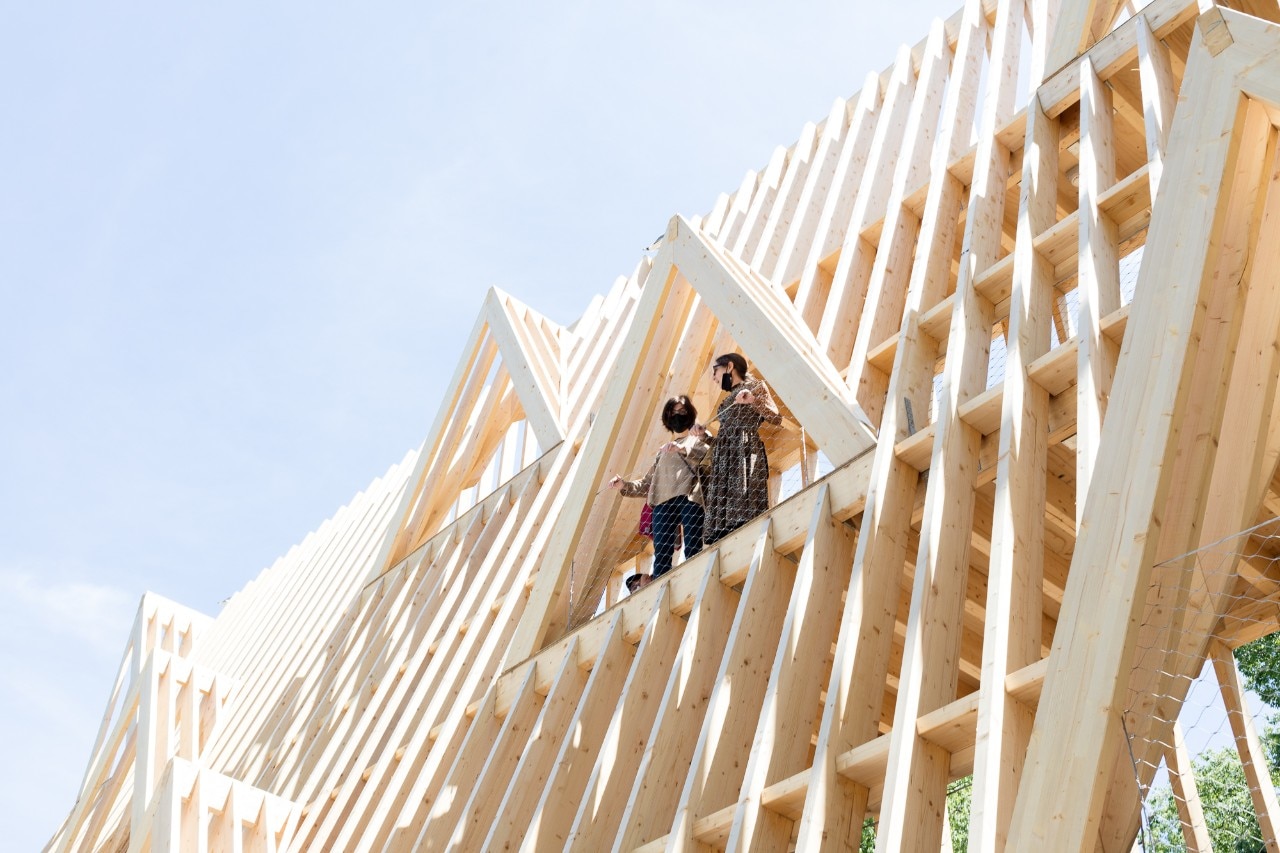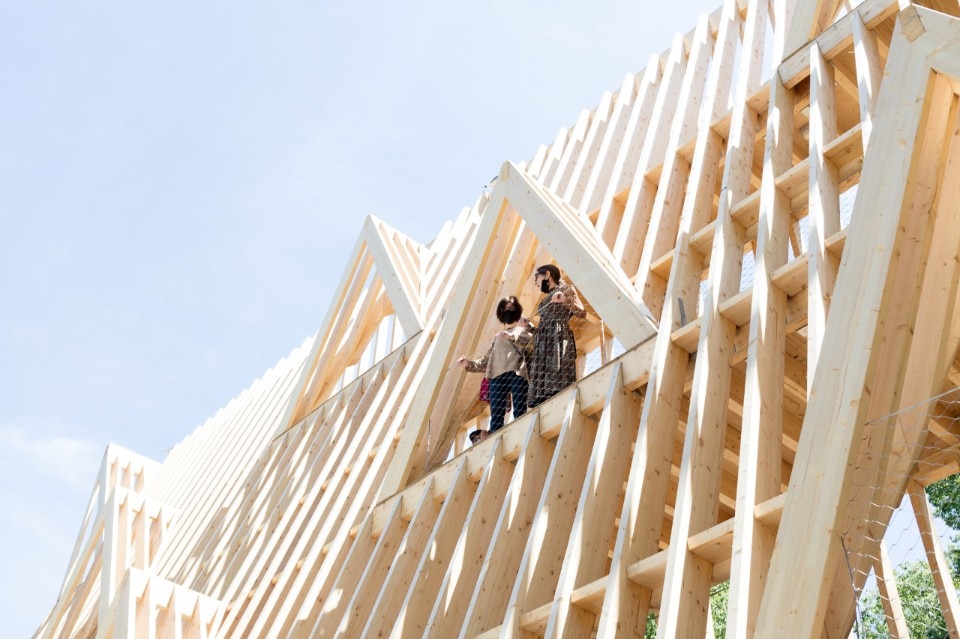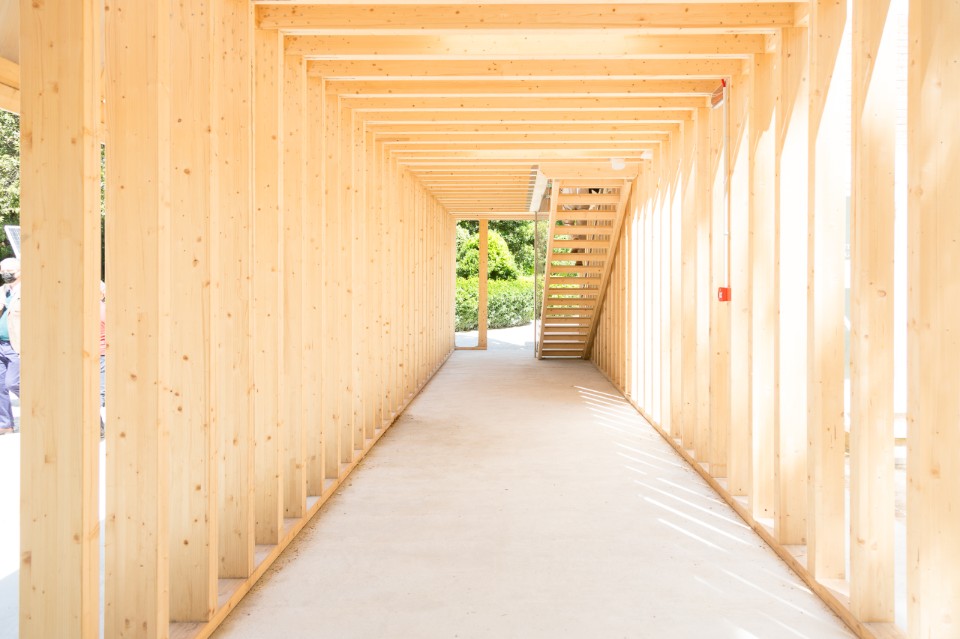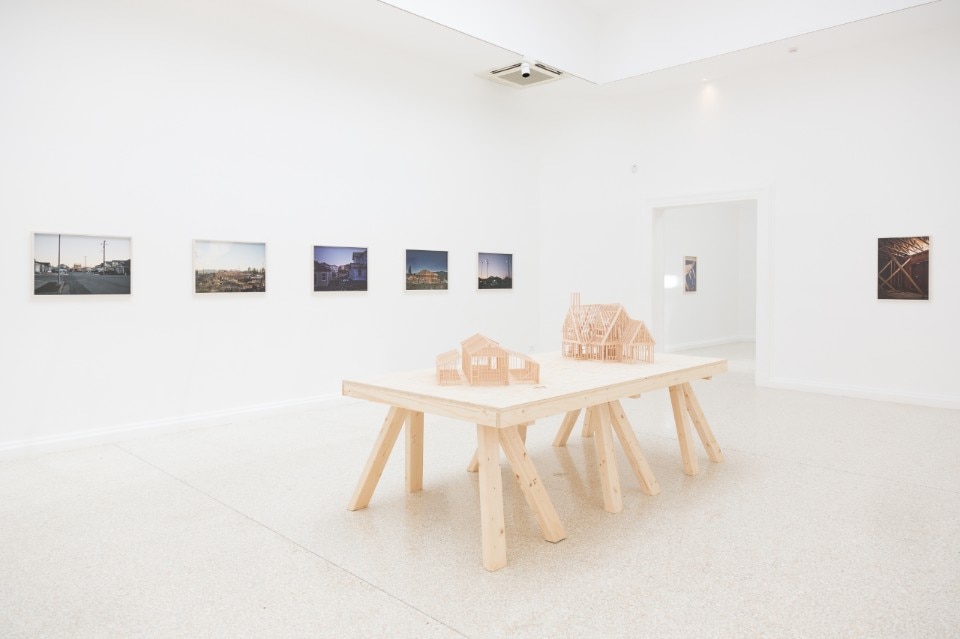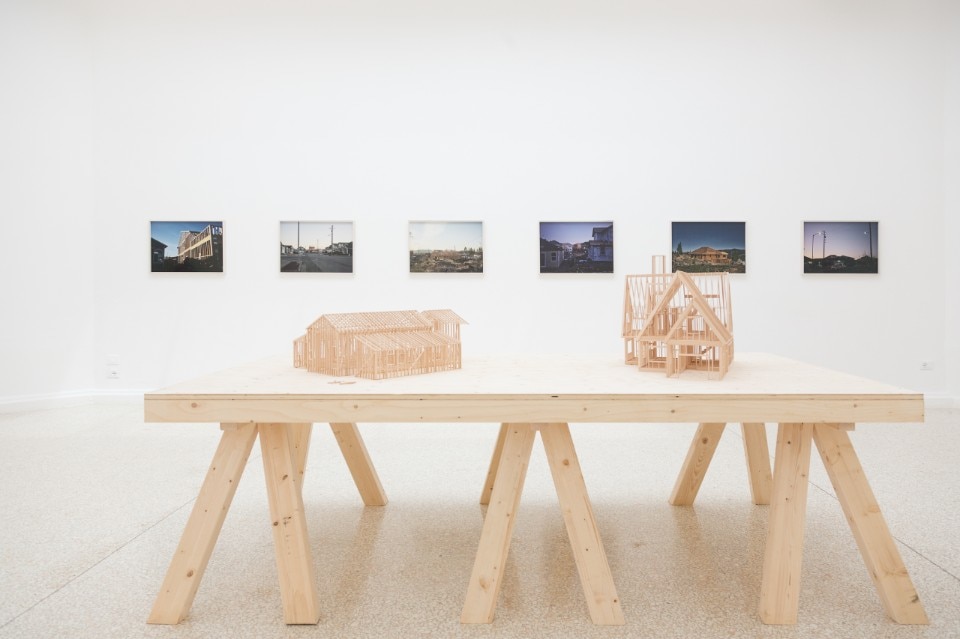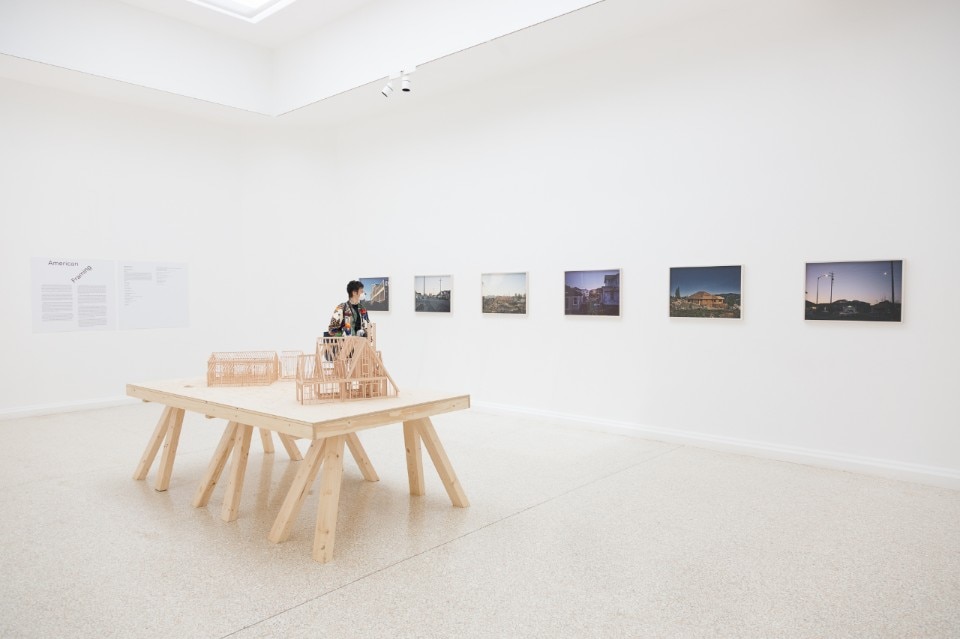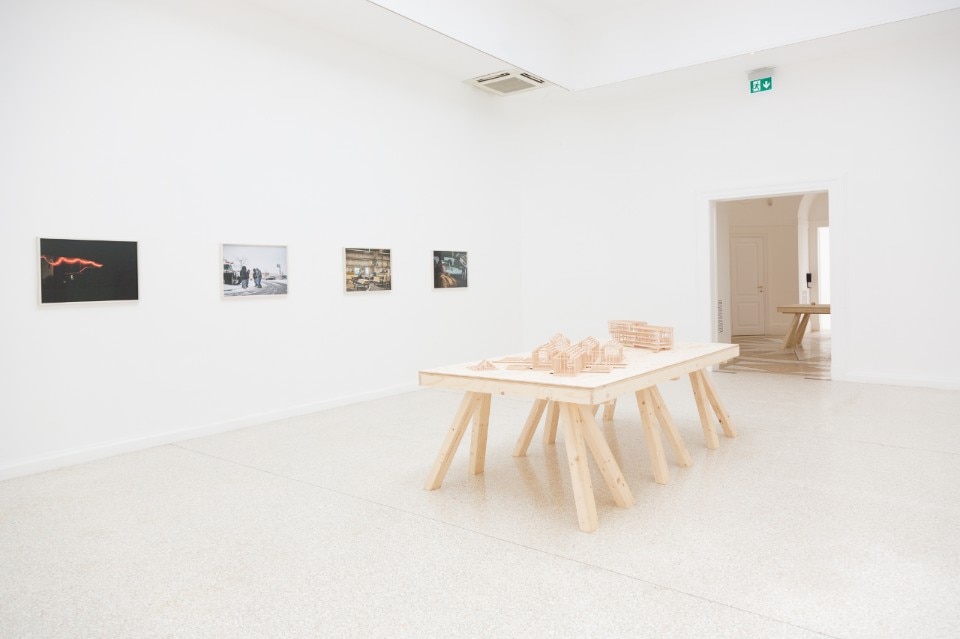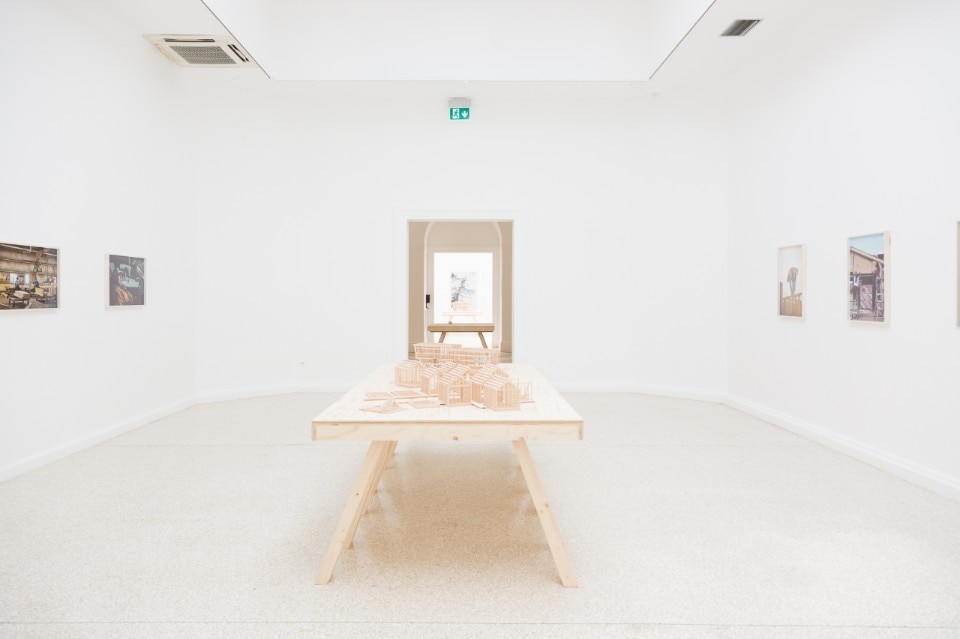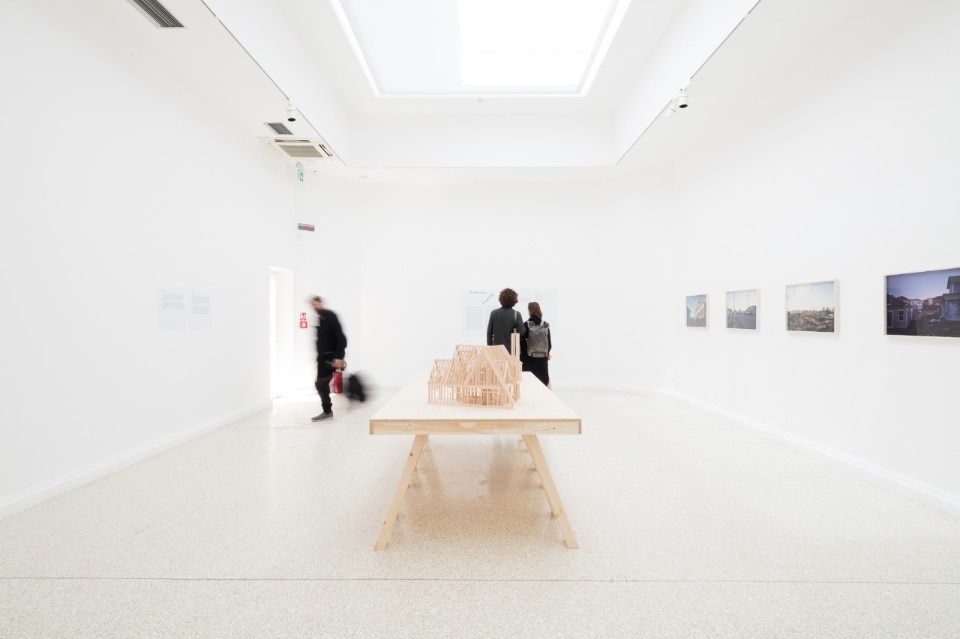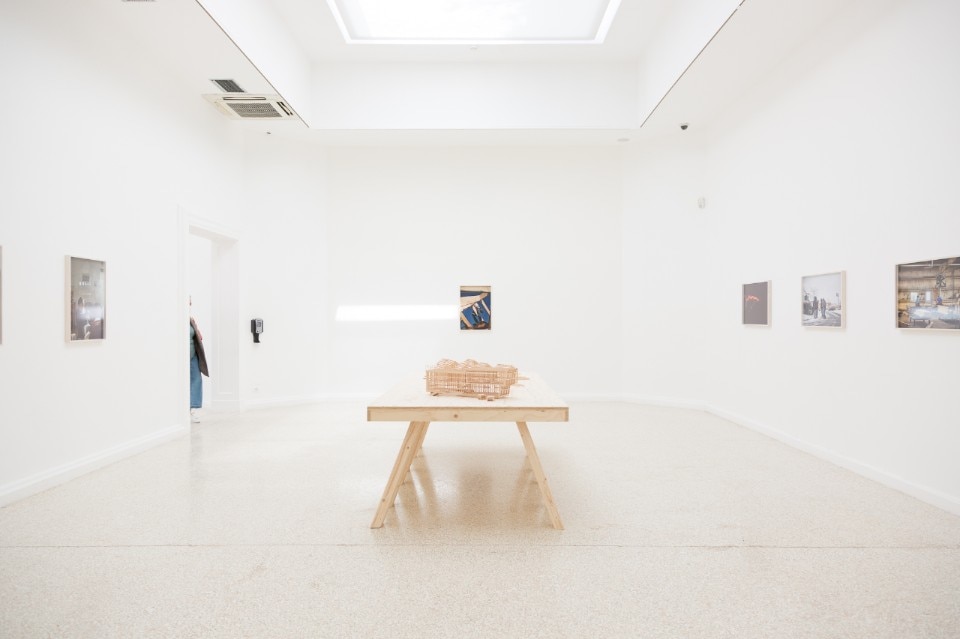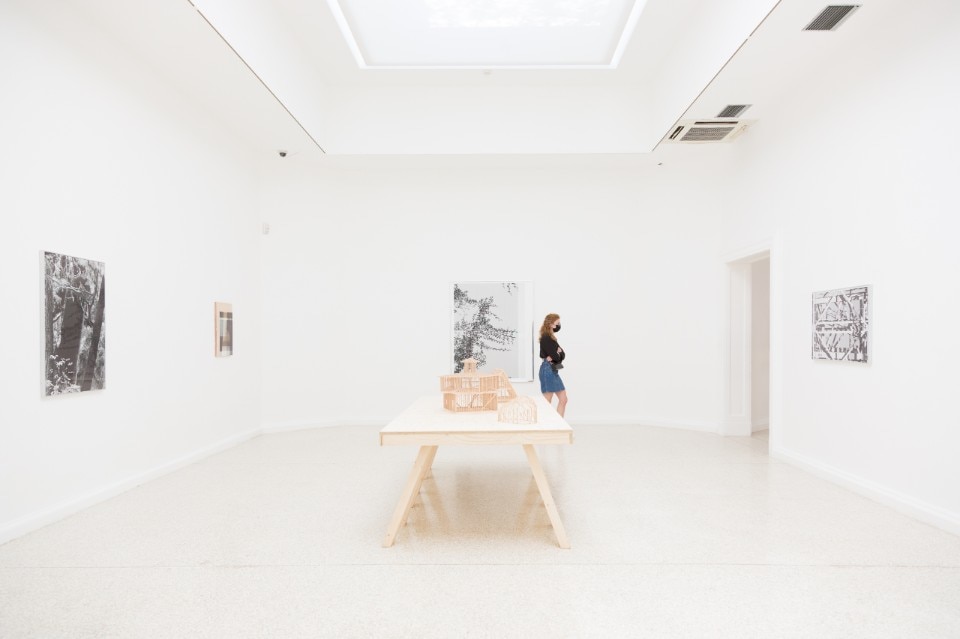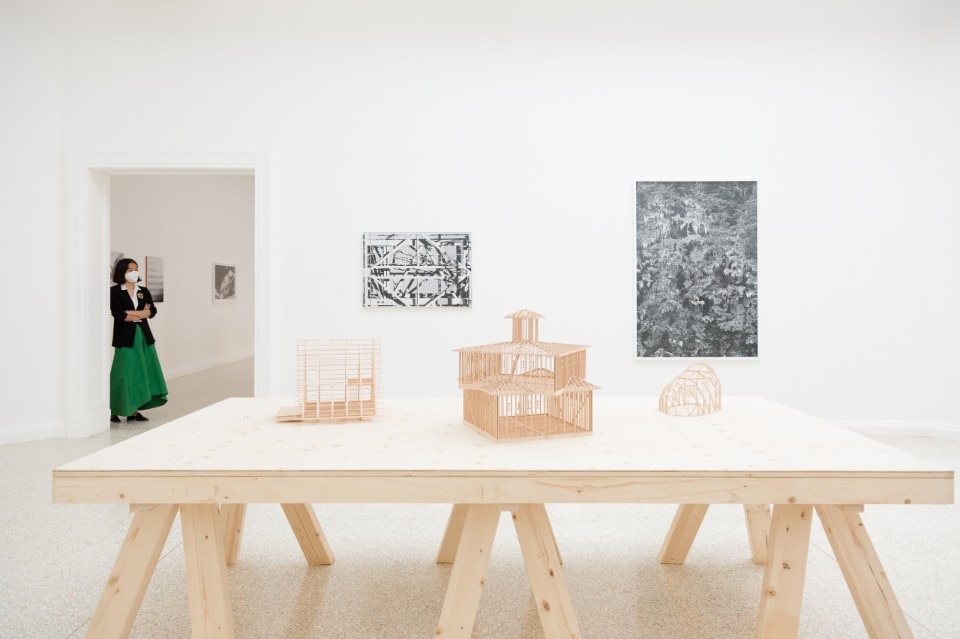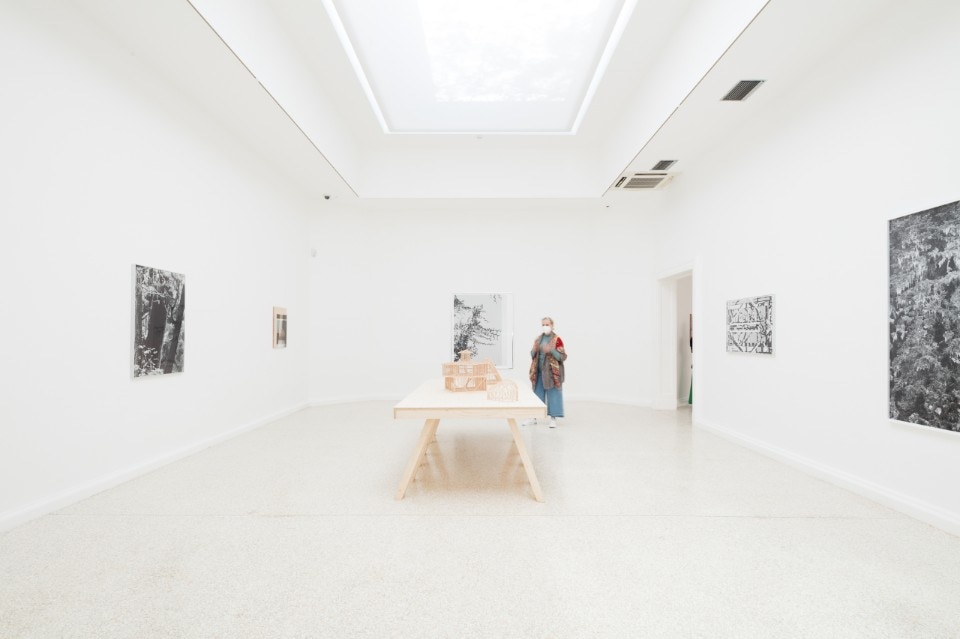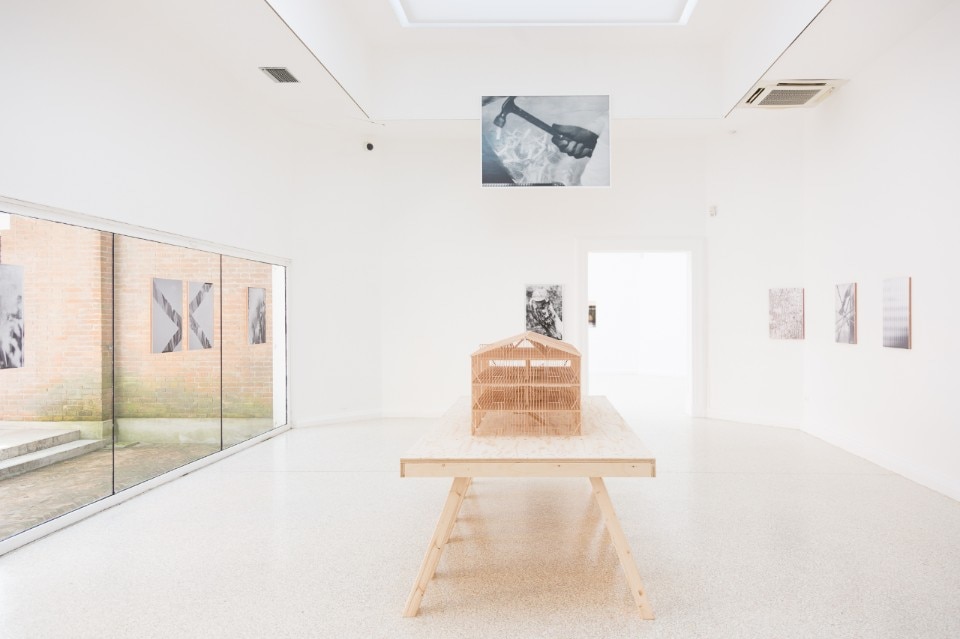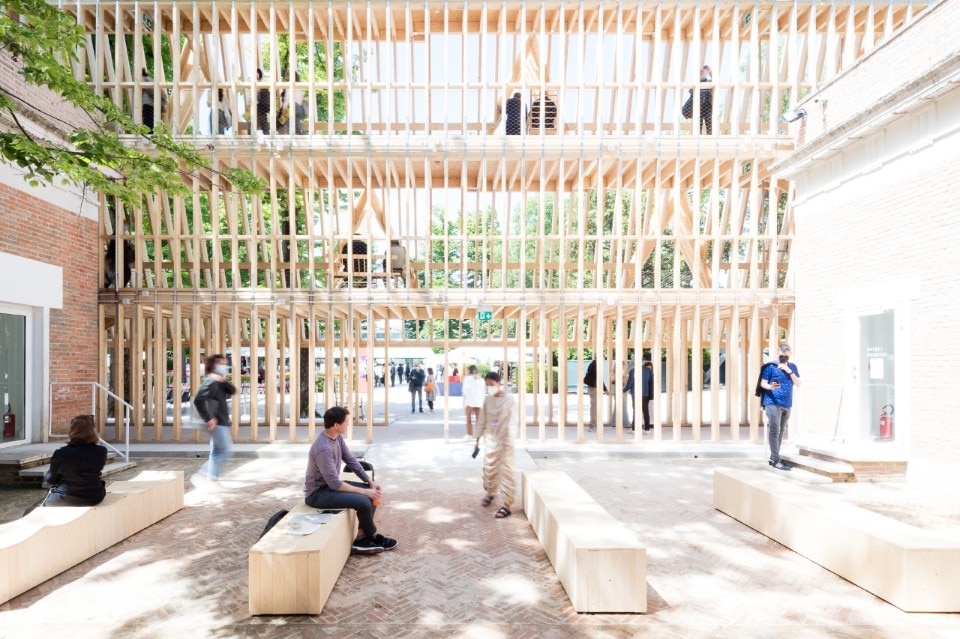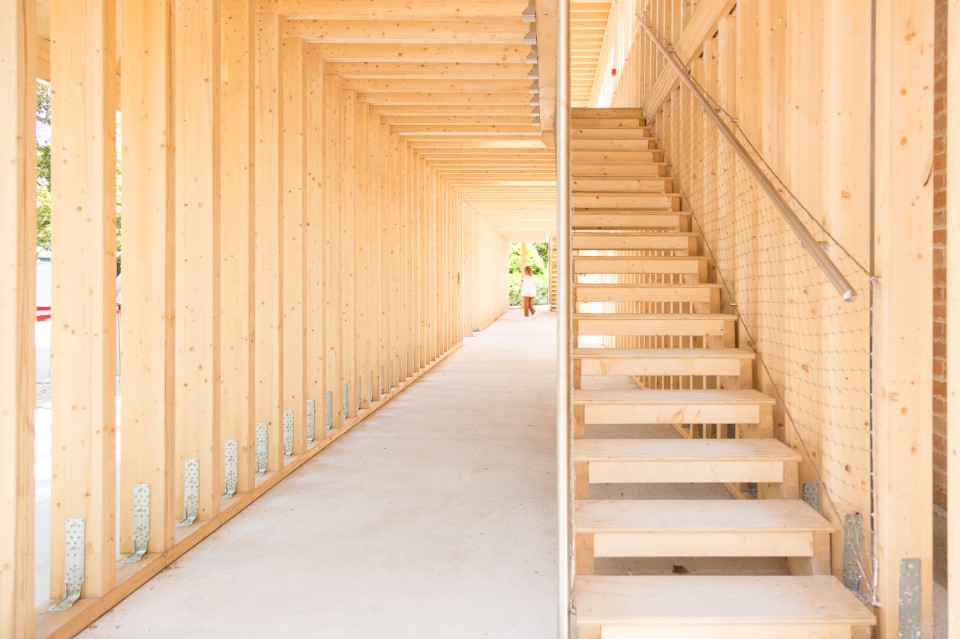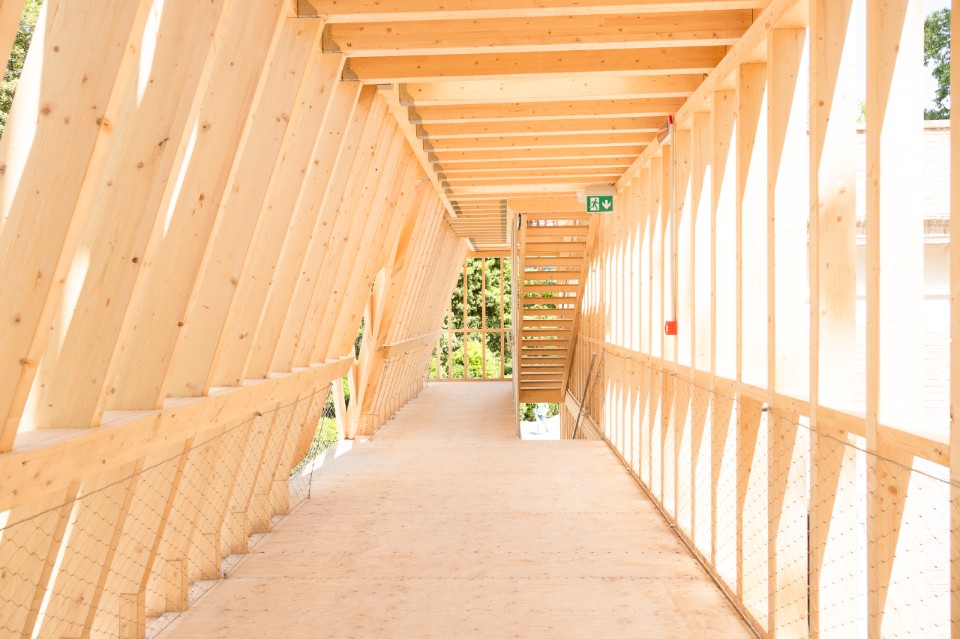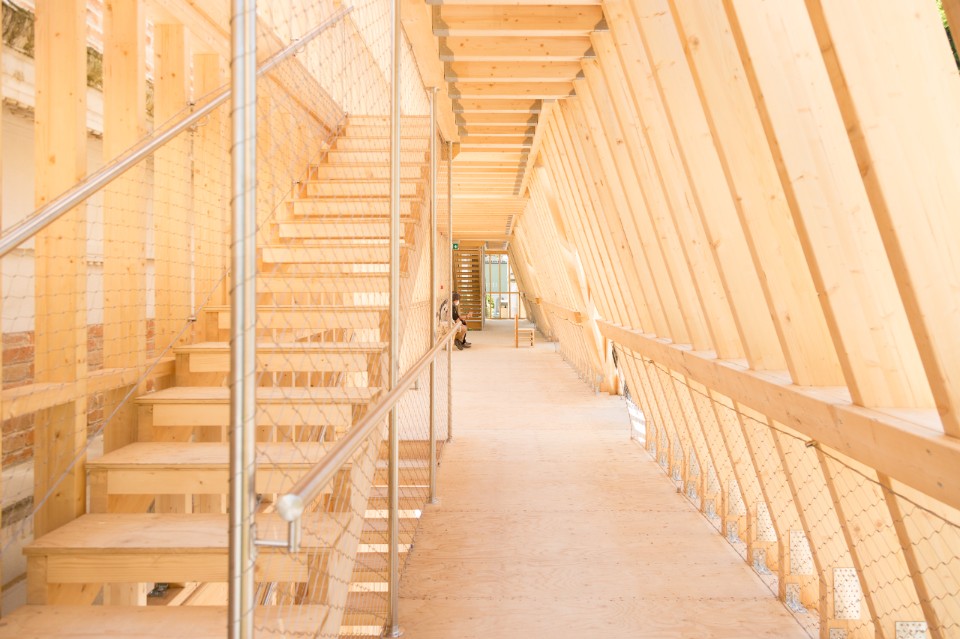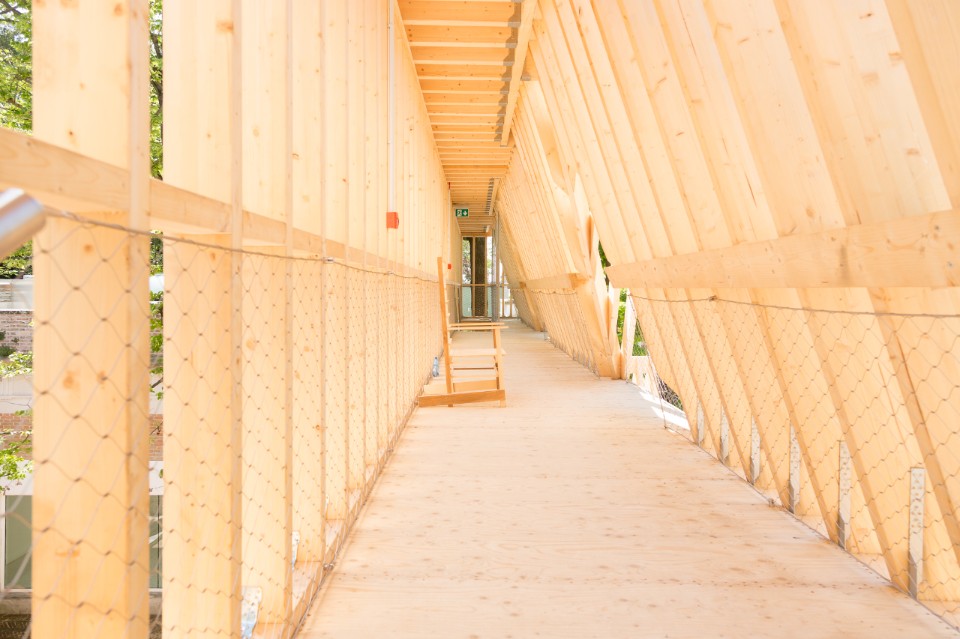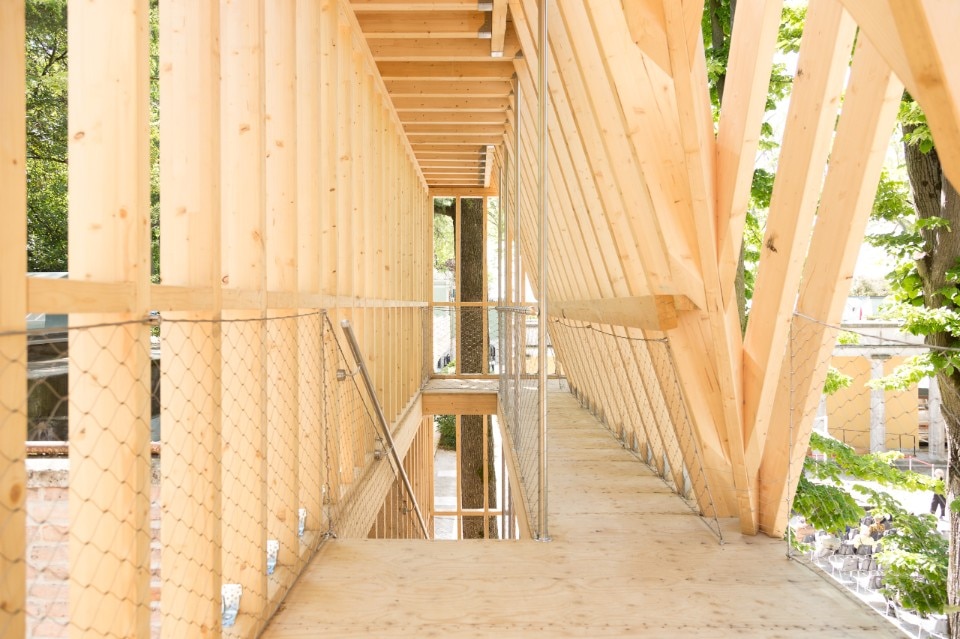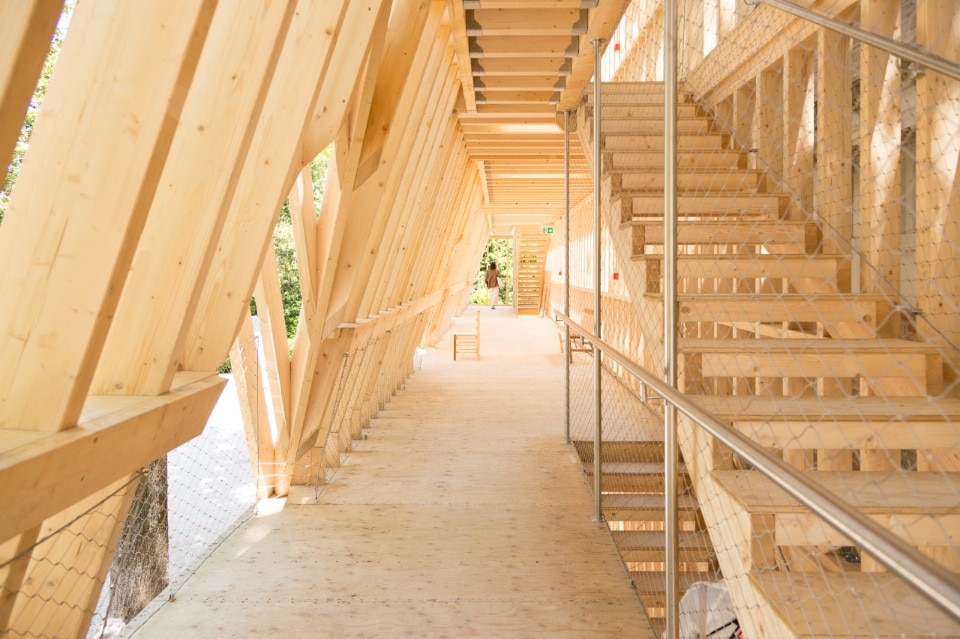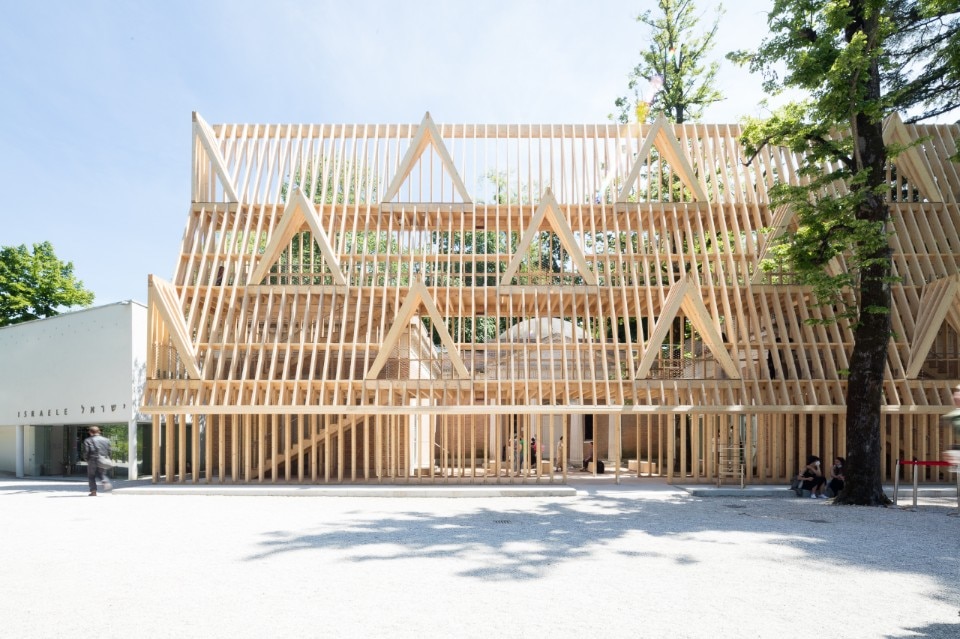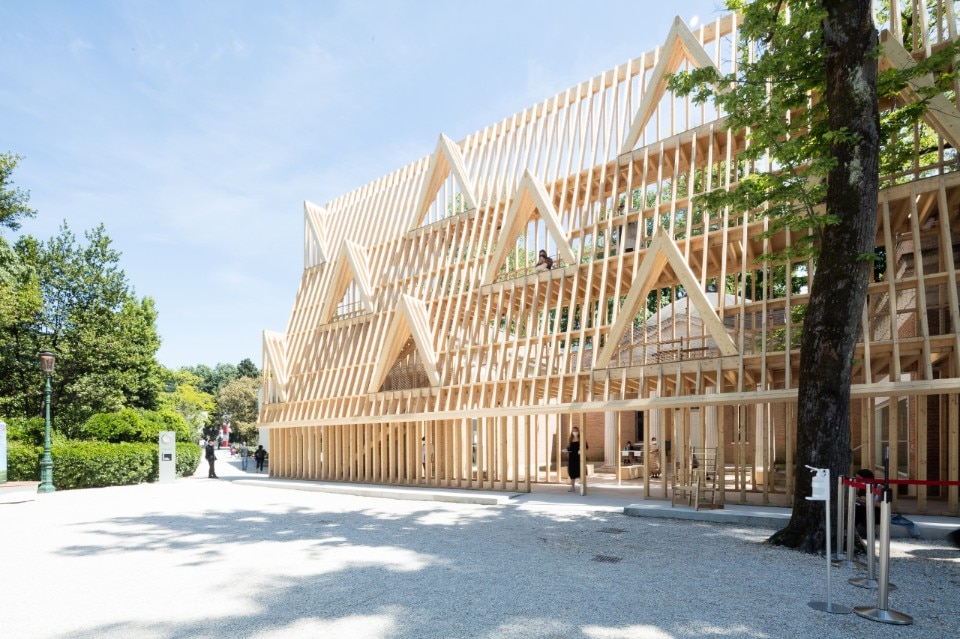In this edition of the Architecture Biennale, Williams Adams Delano and Chester Holmes Aldrich’s 1930s pavilion is not visible. Actually, the neo-Palladian structure can be glimpsed among the 2-by-4s, the prefabricated wooden components of the balloon frame construction system, born in the 19th century. The stacking of the 2-by-4s on three floors temporarily generates a new facade and a courtyard sheltered from the murmur of the Gardens for the national pavilion. American Framing, the title of the exhibition curated by Paul Andersen and Paul Preissner, is nothing more than a narrative of the most widespread American building tradition as it unfolds among architectural space and economic, cultural and social implications. In fact, 90% of the houses in the United States are built in this way.
We meet Andersen in the courtyard and he invites us to scale the pavilion’s temporary facade. On how this theme answers the question posed by Hashim Sarkis “How will we live together?”, the architect replies: “In the United States, the balloon frame is definitely the most common construction method, especially for residential buildings. No matter how much money you have to build your house, the basic element is always the same for everyone. So, there is something inherently egalitarian about this construction system.
There is something inherently egalitarian about this construction system.
Although the balloon frame is not by far a neglected topic in architectural historiography and criticism, it is chosen as a topic because of its relevance in quantitative terms and impact on the culture of the country, as a Koolhaasian ‘foundation’. Inside the pavilion, the route unfolds among architectural scale models and two different but complementary photographic narratives by Chris Strong and Daniel Shea, commissioned for the occasion. The first, a documentary, tells the story of how production and construction intertwine with human life. The second is a more conceptual interpretation, with black and white prints and overlays of multiple subjects. Inside and out the pavilion, there is a series of furnishings by Ania Jaworska and Norman Kelley. In the circular room that articulates the two wings of Delano and Aldrich’s building, a small, ironic scale model of Spike’s doghouse, Tom and Jerry’s bulldog, acts as a pivot recalling the pop culture imagery.
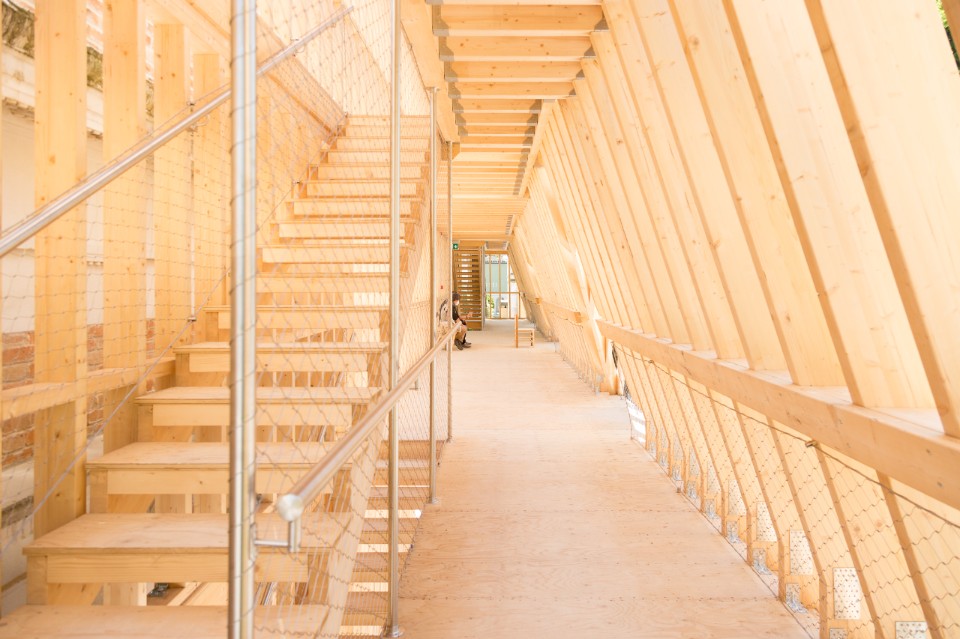
The general impression is that the historic building, the result of years when pavilions were meant to celebrate a nation through propaganda narratives and stone facades, has found itself turned upside down by American Framing. The facade and the courtyard, the former climbable and the latter inhabitable, have something of Venturi, Scott-Brown and Izenour’s “I am a Monument”, but are mostly read as politely subversive gestures in their generosity.
Andersen and Preissner use the old pavilion by changing it, opposing the value of the ordinary to that of narrative, which is so (and rightly) contested at Biennales and Triennales that still maintain an outdated, strongly mono-national approach. The pavilion shows, for example, a scale model of the kit-home from the 1930s, at the time sold in a catalogue, and how it tells a different story from the (contemporary) building that contains it.
In a Biennale where one sometimes finds oneself overwhelmed by loud, ambiguous and dubiously visionary responses, the US pavilion is a fully architectural, pragmatic and sensitive response, as well as a visually crystalline exhibition, as much in message as in purpose. The narrative that the two architects and curatorial professors choose to tell, in years when the United States is inflamed by social protests, is that of the most familiar architecture to Americans, the one that can accommodate their desires, the one that was born and has remained accessible for more than two centuries now.


